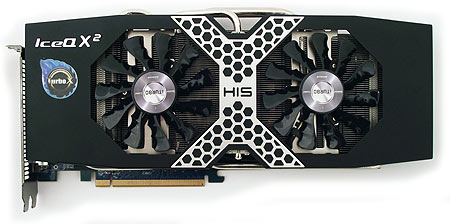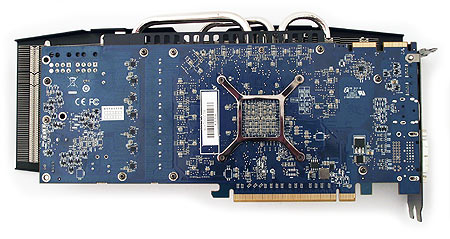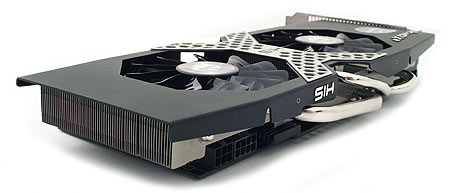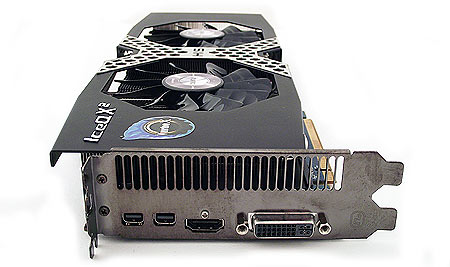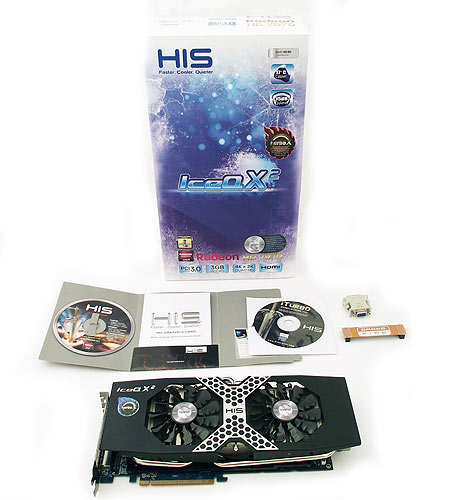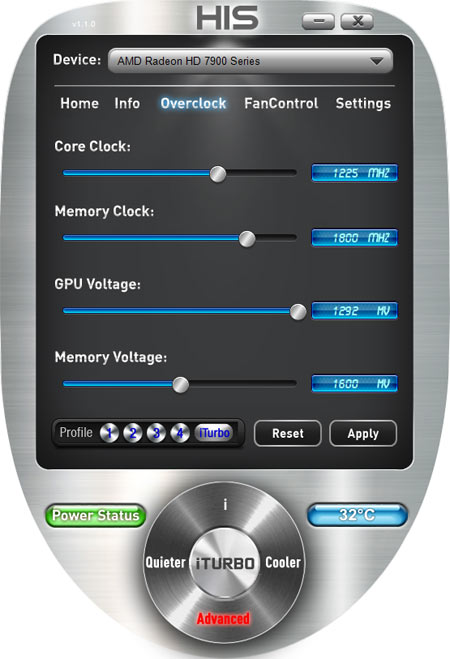Five Radeon HD 7970 3 GB Cards, Overclocked And Benchmarked
GeForce GTX 680 cards are nowhere to be found, and the Radeon HD 7970 recently dropped to a much more attractive price. We thought it was time to round up a handful of Tahiti-based cards to see how board partners are improving upon AMD's original recipe.
HIS 7970 IceQ X2 Turbo And Turbo X
HIS sent us its highest-end Radeon HD 7970, dubbed the IceQ X2 Turbo X. Unfortunately, this $519.99 (MSRP) card will never make its way to North America. The company is limiting distribution to Europe and Asia. Customers in the U.S. will instead see the Turbo version instead, without the X, sporting a lower $499.99 MSRP and less-aggressive frequencies.
Neither card is available yet, but both are expected within the next month.
Both sport an identical PCB, IceQ X2 cooler, 2 lb 1.3 oz weight, and substantial 12” x 5.5” x 1.5” dimensions (not counting the bezel). This makes HIS' Turbo X the longest card in our round-up.
A 1120 MHz core and 1400 MHz memory clock give HIS’ Turbo X the highest core overclock of any other Radeon HD 7970 we've seen, though Sapphire's 7970 OC has a higher 1450 MHz memory clock.
As we mentioned, however, the Turbo X isn’t available in North America anyway. The less aggressive Turbo model should be soon, and it offers a 1050 MHz core and 1400 MHz memory frequency. That's still a respectable overclock, though the core is 20 MHz shy of MSI's Lightning, the fastest Radeon HD 7970 you can purchase in the U.S., Canada, or Mexico. Because of this disparity, we're benchmarking HIS’ card twice: once at its Turbo X-rated clocks and once at the Turbo specification.
Both of HIS' IceQ X2 cards require six- and eight-pin auxiliary power connections. And they're both expected to employ 6+1+1 PWM phases (compared to the reference card’s 5+1+1 design).
The IceQ X2 cooler employs two 85 mm axial fans and five heat pipes (two 8 mm and three 6 mm) to dissipate heat from a larger 40 x 48 mm copper heatsink. The large, thin metal shroud is detailed with a raised honeycomb pattern and custom branding.
Get Tom's Hardware's best news and in-depth reviews, straight to your inbox.
HIS decided to follow AMD’s reference display output configuration, exposing a single dual-link DVI connector, HDMI, and two mini-DisplayPort interfaces.
The Turbo X includes a CrossFire bridge, a DVI-to-VGA adapter, a software install CD, and an installation guide. Considering this product’s premium position, we're particularly disappointed that HIS decided not to include mini-DisplayPort-to-DVI or HDMI-to-DVI adapters.
Overclocking HIS' 7970 IceQ X2
HIS includes its own overclocking utility called iTurbo, which supports voltage control up to 1.292 V, in addition to 1600 MHz core and 2100 MHz memory limits. Those are both significantly higher than the Catalyst Control Center 1200 MHz core and 1500 MHz memory ceilings.
With a voltage setting of 1.25 V, we took our sample to 1250 MHz core and 1800 MHz memory frequencies, achieving the highest stable GPU overclock in this round-up. Our only complaint is that iTurbo doesn’t offer control over AMD's PowerTune technology. So, we had to choose the maximum setting in Overdrive before changing the clocks.
The iTurbo software is both interesting and quite functional. Although MSI’s Afterburner utility gave us access to even higher 1.3 V, 1800 MHz core, and 2475 MHz memory limits, HIS' board didn't appear to operate stably under Afterburner.
Current page: HIS 7970 IceQ X2 Turbo And Turbo X
Prev Page Gigabyte GV-R797OC-3GD Next Page MSI R7970 LightningDon Woligroski was a former senior hardware editor for Tom's Hardware. He has covered a wide range of PC hardware topics, including CPUs, GPUs, system building, and emerging technologies.
-
aznshinobi I need a new pair of pants. Definitely graphics card eye candy. Specially the Sapphire one IMO. Do I hear giveaway THG?Reply -
schnitter I need to replace my 5870 HD I bought over 3 years ago. I can still play any game on HIGH at 1080p, but I want ULTRA on BF3 and Max Payne 3.Reply
Lets hope the 680 GTX becomes available to see what price these AMD cards end up at. I like AMD and how they don't rebrand their cards like nVidia, but $20 cheaper than 680 GTX is not cheap enough to sway me that way. -
hellfire24 why a reference card(visiontek 7970) with non reference competitors?Reply
i am impressed with HIS IceQ X2 Turbo X but still MSi lightning is my favorite.they have beefier VRMs,great cooling and are overclocking beasts.
-
confish21 Nice write up! Really helps when trying to peg down a card. Will be revisiting alot!Reply -
blazorthon nekromobovisiontek for "Particularly at its modest $279 price." $379 or $479??Reply
$479.99 (USD) is more or less the cheapest price point for any Radeon 7970. -
weatherdude Cool review. It'd be nice if SI units were included in the weights and lengths though. Guess I'll have to do a little math. It's very nice to know that the non-reference coolers are much quieter (excluding Gigabyte's) than the original design.Reply
Let's see some typos:
In the 'Test System Setup And Benchmarks' page in the Operating System row it is written as Microsoft Windows 7 x6. I assume it's supposed to be x64.
In the first paragraph of the 'Sapphire HD 7970 OC' page the card is described as "HD 7970 PC".
